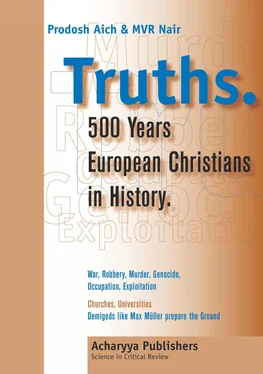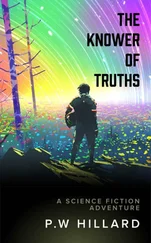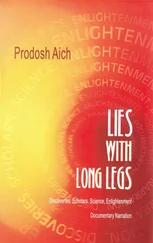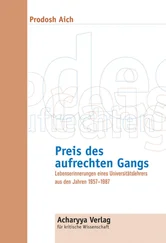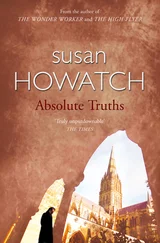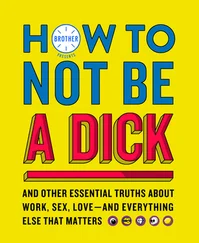CHAPTER 1 PROLOGUE
CHAPTER 2 WHO IS MAX MÜLLER M.A.?
CHAPTER 3 FRIEDRICH MAXIMILIAN’S SCHOOL DAYS AT LEIPZIG
CHAPTER 4 WHICH QUALIFICATIONS DOES
CHAPTER 5 LEARNING SANSKRIT IN GERMANY IN GENERAL AND AT LEIPZIG IN PARTICULAR
CHAPTER 6 WHAT DOES FRIEDRICH MAXIMILIAN
CHAPTER 7 EUROPEANS ENCOUNTERING SANSKRIT
CHAPTER 8 WHY DOES FRIEDRICH MAXIMILIAN GO TO PARIS?
CHAPTER 9 WHAT DOES FRIEDRICH MAXIMILIAN
CHAPTER 10 WHAT DID FRIEDRICH MAXIMILIAN MÜLLER
CHAPTER 11 THE ANCIENT LANGUAGE SANSKRIT HOW DOES IT TRAVEL FROM
CHAPTER 12 WHAT DOES FRIEDRICH MAXIMILIAN MÜLLER DO IN LONDON?
CHAPTER 13 FRIEDRICH MAXIMILIAN MÜLLER
CHAPTER 14 THE EUROPEAN SANSKRIT SCHOLARS
CHAPTER 15 DOES MAX MÜLLER FLEE ALSO FROM LONDON? OR DOES HE SEEK A REFUGE AT OXFORD?
CHAPTER 16 “A CONFESSION” CAME PRIOR TO THE MOMENTS OF TRUTH. MOMENTS OF TRUTH BEGIN TO ARRIVE
CHAPTER 17 MOMENTS OF TRUTH BEGIN TO CONTINUE
CHAPTER 18 MOMENT OF TRUTHS – HOUR OF DECISION
CHAPTER 19 INDOLOGY, LINGUISTICS,
CHAPTER 20 DIRTY MORASS ALL-EMCOMPASSING
CHAPTER 21 EPILOGUE
This book does not pretend to deal with history. This book deals with our past and with our present by connecting facts that have been disconnected by so-called philosophers, historians, and social scientists in general and by “scholars extraordinary” in particular. It looks back to ancient heritage based on primarydocuments and evidences.
This book does not intend to describeour past, does not intend to add just another story to the lot, as modern historians do. It simply puts facts coherently together that are based on primary documentary sources. It is a report of a rigorous scrutiny of secondary sources. It puts scholars and their scholarly deliberations to the test of validity collating their biographies and their deliberations with the primary documents.
The authors of this book do not claim to be scholars in the prevailing international academic culture. They have become simple-minded in course of time. They just want to know things and matters as these actually are and how these things and matters came into being. They constantly try to shed off virtual worlds created by superstitions, beliefs, ideologies, systems of artificial terminology and all that goes with these creations. They do exercise in careful reading. And while they read, they raise questions and questions, digging back to the beginning, to the origin.
This methodology is learnt from the wisdom that is practiced in daily life through agesin all human societies. This wisdom is simple. Whenever someone tells a tale, two simple questions are to be put to begin with: who is the narrator and how does the narrator come to know what he is telling about.
The authors beginthe presentation of their documentary journey to our past and present putting these two simple questions to a Max Müller, M.A.Why Max Müller, M.A.? All queries to human cultural heritage automatically lead to the “East”, to “Orient” and thus to the cultural heritage of Bharatavarsa, a vast land which has later been named Indiaby foreign people. None else has left behind more printed pages on the “East” and on “India” than Max Müller. He has also claimed to be the first human being performing the remarkable Hercules-job, collecting and editing the oldest book that the humankind has ever known: the complete Rig Vedain the Sanskrit script. Sanskrit is an ancient language.
Another reason to begin this search and re-searches exemplarily with the detailed biography of Max Mülleris that he is kept as a demigod in the Gallery of all-time Scholars very highwho seemingly excelled in the Science of Ancient Cultures, as one of those European Christian intellectual giants. In any standard books on History and culture we find quotes like:
“The German Indologist H. Jacobi came independently to similar conclusions and dated the beginning of the Vedic period in the middle of the 5th millennium. Mostly one followed, however, the dating set by the famous German Indologist Max Mueller who taught in Cambridge in the late 19th century. Setting out from the lifetime of the Buddha around 500 BC he dated the origin of the Upanishads in the centuries from 800 to 600 BC as the philosophy in them had originated before Buddha’s deeds. The Brahmana– and Mantra texts preceded these in the centuries from 1000 to 800 respectively from 1200 to 1000 BC. Today one dates the oldest Vedic text, that of Rigveda, into the middle of the 2nd millennium BC. Since the Vedas soon after this genesis as a divine manifestation were not allowed to be changed anymore and handed down to our contemporary time by priest families verbally in an unbelievably precise manner, they can now be considered, after their dating can be regarded as being fixed at least in specific centuries, as historical sources of first rank for the history of the Vedic society in northern India.”
Nothing in this quote is based on primary sources. Absolutely nothing. These types of loose writings are based actually on “modern-science-rituals” of “copy and paste” from available printed pages. Take palatable parts from printed secondarysources, add some new bits of “information” or “imagination”, make it plausible, and make it sellable. In this way these secondary-source-writings create virtual worlds of fantasy with sellable qualities only.
Unless the claims are collated with career-data of the celebrated authors, the truth will never be unveiled. None of the claims of any European Christian intellectual giants have been challenged or put to the test of validity. This is unsurprisingly done in this book. In course of the journey along with the real biography of Max Müller, M.A., for example, it is revealed, we apologise looking a little ahead, that his claims are swindles. It is also revealed that his biography is exemplaryto this culture. We are surprised to note that Max Müllerwas kept on the payroll of the British East India Company to accomplish his scholarly jobs; from the very beginning of his occupational career. Yes, the British East India Company. And what did the British East India Company do in Bharatavarsa?
It is remarkable that in the cultural heritage of Rig Veda there is no mention of a land or of a geographical area which is called “India”. This is all the more remarkable because this cultural heritage includes vast number of profound books on knowledge, science, philosophy and literature. Rig Veda is the first of the four Vedas composed in the Vedic language. The other profound books are handed-down in the Sanskrit languagethat emerged later. There are two more ancient languages, Prakritand Palifollowing Sanskrit. Also in the post Vedic books in the Sanskrit language there is indeed mention of a vast geographical area of culture called Bharatavarsa. The name “India” is obviously accorded by foreign people, most probably by the Hellenes in the Greek language. For convenience the authors of this book use “ India” keeping Bharatavarsain mind.
After the unsuccessful foray of Alexander the Macedonian,about 2400 years back, the Hellenistic diplomat Megasthenesstays in Bharatavarsa as Ambassador of Seleucus Ifor eleven years. He writes four bulky volumes on his observations and experiences there, but he does not write on the Vedas, Upanishads, Puranas, Sutras, Brahmanas and the likes, nor makes any special references to languages. This may indicate that the Hellenes were quite familiar with these books and with the languages. However, this is not known. It is known that the cultural heritage of Indiawas not brought to Christian Europe in the Greek language. Whatever the Hellenes have reported on India comes to the rest of Europe much later, after the Europeans have lived around a thousand years in Christianity.
Читать дальше
